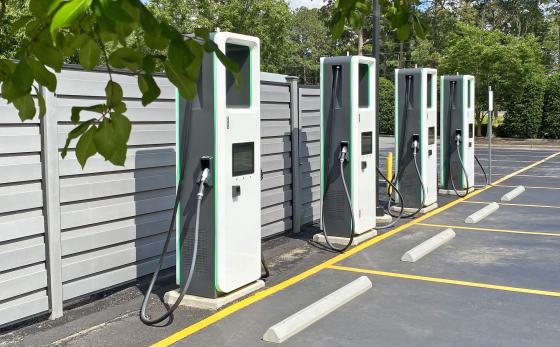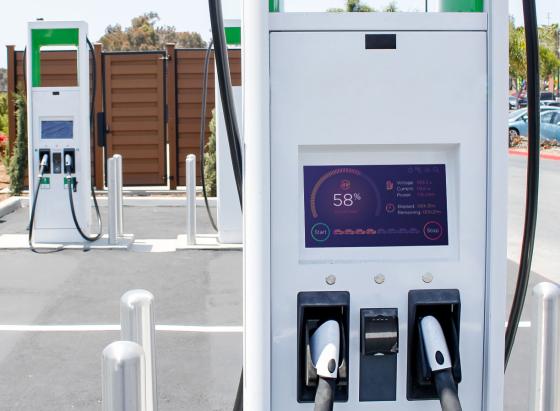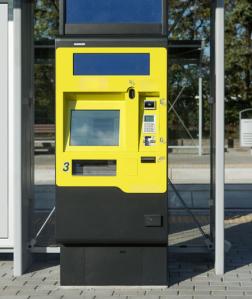Creating a more sustainable future together means meeting the needs of our customers. How? By offering state-of-the-art solutions to meet your e-mobility wants. Our vision incorporates your complete system through to the Electric Vehicle charging station user infrastructure.
It seems that whether you are six, 16, or 60+, you are talking about our environment, being net zero, being carbon neutral, conservation, sustainability or being conscious or aware of our impact, whether that’s in your business or personal life. As a result of covid, consumers now able to travel have a new mindset, considering both where they WANT to go and where they NEED to go. This new way of thinking is leading people to make more conscious decisions when purchasing their vehicles and how they travel.

Famous figures such as David Attenborough, Prince Charles and Greta Thunberg have made it their lives legacy to continuously campaign, as in their words, ‘There is No Planet B.’
Awareness of planet protection is at an all-time high as we watched these figureheads and global leaders (political and non-political) assemble in Glasgow for COP26 to set the agenda of how we stabilise the climate.
One of the biggest discussion points focussed on transportation, both domestic and commercial as we look to reduce our emissions. The fact that COP26 coincidently fell on ‘Transport Day’ meant that it was a topic in the spotlight. The focus: zeroing out pollution from some of the world’s dirtiest and climate-busting sources including cars, trucks, ships, and of course aeroplanes and helicopters. The irony being the fleets of cars and private jets that we witnessed to transport the aforementioned leaders from point A to point B, but let’s not labour on that.
So, what were the key takeaways in relation to transportation?
- One of the top drivers for EV sales in leading jurisdictions is manufacturer supply policies, such as zero-emission vehicle requirements and vehicle emission standards
- Charging infrastructure: plan for the majority adopter and 100% sales sooner rather than later
- Make EVs cheaper to purchase compared to polluting vehicles, and more attractive to own and operate

Electric Vehicles Charging Stations (EVC)
As per (Growth Market) analysis, the electric vehicle market is projected to reach USD 802.75 billion by 2028, expanding at a CAGR of 21.6% during the forecast period, 2021 - 2028.
By 2040, the percentage of electric vehicles on the road in the US is expected to climb from 3% today to 58%. In Europe and China, by 2030 EVs will represent 72% of all passenger sales, driven primarily by European CO2 regulations and China’s EV credit system.
In addition, the UK government has made the pioneering announcement that all new homes built in England will be required by law to have electric vehicle charging points installed from 2022.
The new law will also cover new-build workplaces, supermarkets and buildings undergoing major renovations, something other countries will surely replicate to meet their own emissions goals.

With the rise in EV use, there will be greater strains on countries’ charging networks, and private businesses are perfectly placed to capitalise on the growing demand for public EV chargers.
What are the different levels of EV charging?
EV charging is divided into 3 Levels: Level 1, Level 2, and Level 3. As a rule of thumb, the higher the charging Level, the higher the power output and the faster it will charge your electric car.
One of the main barriers to buying is the extensive charge time requirement. Charging removes the spontaneous ability to hop into the car and go. Charing means planning and being prepared to stop, plus factoring in the charging time. To overcome this barrier to buying, investment needs to be placed to get to a position where charging your car and filling your car with petrol are parallel.
The Level 3 chargers are where the industry needs to get to as a norm. Higher powered Direct Current Fast Chargers (DCFCs) are estimated to charge a battery in 20 minutes
So, how can Anders help you with your Electric Vehicle Charging Station needs?
Charging stations need to give the user immediate information on how the charge is progressing, the number of miles they are getting for their charge, any issues with connectivity etc.
Embedded systems from Anders can handle the careful output of power for optimal charging, whilst managing temperature to ensure safe operation.
Anders’ vast expertise in User Interface systems can ensure the display clearly and accurately shows the information the customer needs.

From high brightness displays, all round viewing angles and reliable capacitive touch in all conditions, to large format displays with additional advertising space for the vendor, the whole system can be remotely monitored using IOT connectivity to the provider.
Highlighting solutions to these current challenges is an example of where we helped a major manufacturer of EVC charging stations develop a charging station to meet their users needs. To do this, we developed an integrated embedded display system which not only provided excellent user interface, clarity, and power management, but stood the test of extreme conditions in outdoor environments, including temperature extremes, rain and sunlight.
Get in touch to learn more about how Anders can help with your EVC display and embedded technology!


